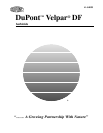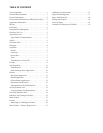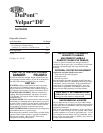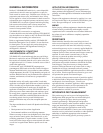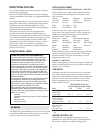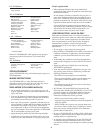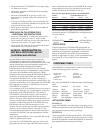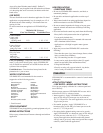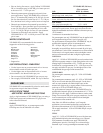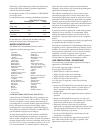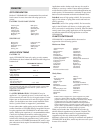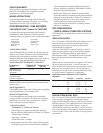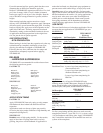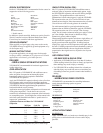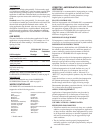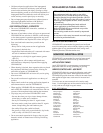
DIRECTIONS FOR USE
It is a violation of federal law to use this product in a manner
inconsistent with its labeling.
DuPont™ VELPAR® DF should be used only in accordance
with recommendations on this label, or in supplemental DuPont
labeling.
Do not apply this product in a way that will contact workers or
other persons, either directly or through drift. Only protected
handlers may be in the area during application. For any
requirements specific to your state or tribe, consult the agency
responsible for pesticide regulation.
The correct use rates by crop and geographical area,
specified on the label, and proper mixing/loading site
considerations and application procedures must be followed
to minimize potential for hexazinone movement into ground
water. Users are encouraged to consult with their state
Department of Agriculture, Extension Service, or other
pesticide lead agency for information regarding soil
permeability, aquifer vulnerability, and best management
practices for their area.
AGRICULTURAL USES
VELPAR® DF is recommended for control of certain weeds
in established alfalfa grown for hay. Do not use on alfalfa
grown for seed in any state except California.
APPLICATION TIMING`
NON-DORMANT AND SEMI-DORMANT VARIETIES
In the following states, make a single application during
winter months when alfalfa plants are in the least active
stage of growth:
Arizona Montana Oklahoma Washington
California Nebraska Oregon Wyoming
Colorado Nevada South Dakota
Idaho New Mexico Texas
Kansas North Dakota Utah
In the following states, make a single application in the
spring before new growth exceeds 2 inches in height or to
stubble after cutting following hay removal and before
regrowth exceeds 2 inches in height:
Connecticut Maine New Hampshire Vermont
Delaware Maryland New Jersey Virginia
Illinois Massachusetts New York West Virginia
Indiana Michigan Ohio Wisconsin
Iowa Minnesota Pennsylvania
Kentucky Missouri Rhode Island
Severe alfalfa injury may result following application after
cutting if either the regrowth is more than 2 inches high,
significant stubble is left after alfalfa cutting, or the air
temperature is above 90 °F.
DORMANT VARIETIES
Make a single application after alfalfa becomes dormant and
before new growth begins in the spring. Where weeds have
emerged, use a surfactant.
USE RATES
Use higher rates on hard-to-control species, fine textured
soils, soils containing greater than 5% organic matter, or
under adverse environmental conditions such as temperature
extremes or when weeds are stressed due to low rainfall.
Select the appropriate dose for soil texture and organic
matter content as follows:
VELPAR® DF (Lb/Acre)*
Percent Organic Matter in Soil
Soils <1% 1–5% >5%
Coarse Texture
Loamy sand,
sandy loam 2/3 - 1 2/3 - 1 1 1/3 -2
Medium Texture
Loam, silt loam
silt, clay loam,
sandy clay loam 2/3 - 1 1 - 2 1 1/3 - 2
FineTexture
Silty clay loam,
sandy clay,
silty clay, clay 1 - 2 1 - 2 1 1/3 - 2
* Do not exceed 1 lb per acre on alfalfa less than one year
old.
WEEDS CONTROLLED
VELPAR® DF, when applied preemergence or early
postemergence at the following rates is recommended for
the control or suppression of the following species:
ALFALFA
AGRICULTURAL USE REQUIREMENTS
Use this product only in accordance with its labeling and
with the Worker Protection Standard, 40 CFR part 170.
This Standard contains requirements for the protection of
agricultural workers on farms, forests, nurseries, and
greenhouses, and handlers of agricultural pesticides. It
contains requirements for training, decontamination, notifi-
cation, and emergency assistance. It also contains specific
instructions and exceptions pertaining to the statements on
this label about personal protective equipment (PPE) and
restricted-entry interval. The requirements in this box only
apply to uses of this product that are covered by the Worker
Protection Standard.
Do not apply this product in a way that will contact workers
or other persons, either directly or through drift. Only
protected handlers may be in the area during application.
Do not enter or allow worker entry into treated areas during
the restricted entry interval(REI) of 24 hours.
PPE required for early entry to treated areas that is
permitted under the Worker Protection Standard and that
involves contact with anything that has been treated, such as
plants, soil, or water, is :
Coveralls
Chemical resistant gloves made of any waterproof
material
Shoes plus socks
Protective eyewear
3



